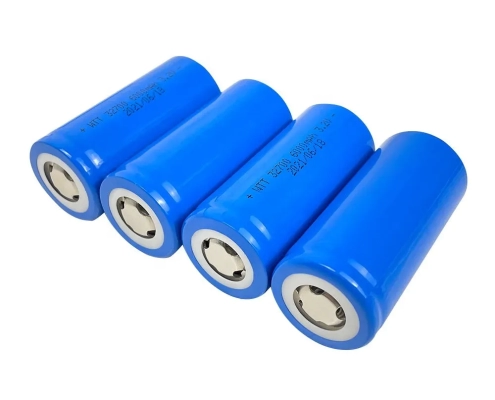Un guide complet des piles de lampes de poche : types, fonctionnement et choix de la bonne
Table des matières
- Un guide complet des piles de lampes de poche : types, fonctionnement et choix de la bonne
- Introduction
- Comprendre les différents types de lampes de poche
- Comment fonctionnent les lampes de poche ?
- Plongez dans la technologie des batteries
- Pleins feux sur la batterie LiFePO4
- Comment choisir la bonne batterie pour votre lampe de poche
- 1. Prise en compte du type de lampe de poche et du cas d'utilisation
- 2. Évaluation des options de batterie : avantages et inconvénients de chacune
- 3. L'importance de la compatibilité et de la taille de la batterie
- 4. Évaluation de la durée de vie et de la recharge de la batterie
- 5. Prise en compte des conditions environnementales
- Conseils pour entretenir les piles des lampes de poche
- Conclusion
- En savoir plus sur la batterie
Introduction
Dans le tiroir de chaque maison ou dans la trousse de chaque explorateur, il y a un outil omniprésent sur lequel nous comptons tous : la modeste lampe de poche. Son importance dans notre vie quotidienne est souvent négligée jusqu'au moment où elle s'avère nécessaire.
Imaginez ce scénario. Une panne de courant soudaine en fin de soirée plonge votre maison dans l’obscurité. Il y a un tâtonnement familier dans les tiroirs, un soupir de soulagement lorsque votre main se referme sur cette forme cylindrique familière. La lampe de poche. Cliquez. En un instant, l’obscurité disparaît, remplacée par un faisceau de lumière réconfortant.
Les lampes de poche sont également de fidèles alliées pour les amateurs de plein air, ouvrant la voie lors de randonnées au crépuscule ou pour naviguer dans les coins inconnus d'un camping. Ce sont des outils essentiels dans les kits d'urgence, offrant une visibilité cruciale lors d'événements malheureux comme une panne de véhicule ou des catastrophes naturelles. Des professionnels tels que les forces de l’ordre, le personnel de sécurité et les équipes de recherche et de sauvetage en dépendent également fortement.
Mais avez-vous déjà pris le temps de réfléchir à ce qui alimente cet outil simple mais essentiel ? Ou comment différents types de lampes de poche peuvent nécessiter différents types de piles ?

Dans cet article, nous souhaitons mettre en lumière, pour ainsi dire, le cœur de la lampe de poche : la batterie. Nous explorerons les différents types de lampes de poche, leurs principes de fonctionnement et la variété de batteries qu'elles utilisent, avec un accent particulier sur les batteries au lithium fer phosphate (LiFePO4). Notre objectif ? Pour vous aider à comprendre et à choisir la bonne batterie pour votre lampe de poche en fonction de vos besoins spécifiques.
Que vous soyez un aventurier en plein air à la recherche d'une source de lumière fiable, un propriétaire se préparant à d'éventuelles pannes de courant ou simplement une personne intéressée par la mécanique des objets du quotidien, ce guide complet améliorera vos connaissances sur les piles des lampes de poche.
En plongeant au cœur de ces outils essentiels, nous mettrons en lumière le rôle que jouent les batteries dans leur fonctionnement. Nous mettrons en lumière l’histoire de la technologie des batteries et vous aiderons à choisir la bonne batterie, en tenant compte de facteurs tels que la compatibilité, la taille, la durée de vie de la batterie, la recharge et les conditions environnementales.
À la fin de cet article, vous apprécierez non seulement le faisceau familier et réconfortant de votre lampe de poche, mais vous comprendrez également la source d'alimentation qui rend tout cela possible. Allumons la lumière de la connaissance et commençons ce voyage éclairant.
Comprendre les différents types de lampes de poche
Nous voyons des lampes de poche dans tous les domaines, du tiroir de chevet aux profondeurs du kit de spéléologue. Mais ils ne sont pas tous créés égaux. Les lampes de poche se présentent sous différentes formes, chacune étant conçue pour répondre à des besoins et des fonctions spécifiques. Allumons et éclairons ces différents types.
1. Lampes de poche :
Il s’agit du type de lampe de poche traditionnel et le plus courant qui me vient probablement à l’esprit. Généralement cylindriques et compactes, les lampes de poche sont universellement reconnues. Ils sont conçus pour être facilement portables, durables et fournir une source de lumière fiable. Un excellent exemple de leur utilité est celui de 2017, lorsque l’ouragan Maria a laissé Porto Rico sans électricité pendant des mois. Les lampes de poche sont devenues une bouée de sauvetage pour les résidents, leur permettant de naviguer dans l’obscurité en toute sécurité.
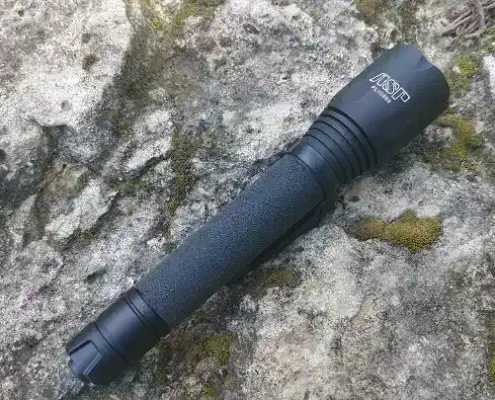
2. Phares :
Ensuite, nous avons les lampes frontales. Imaginez que vous réparez une voiture et que vous essayez de tenir une lampe de poche dans une main tout en travaillant de l'autre. Difficile, non ? C'est ici que les lampes frontales prouvent leur valeur, offrant un éclairage mains libres. Les amateurs de plein air les privilégient souvent car ils permettent une mobilité et une interaction totales avec leur environnement. Les données du rapport 2019 de l'Outdoor Industry Association le confirment, montrant une augmentation significative des ventes de lampes frontales, en particulier parmi les randonneurs et les campeurs.
3. Lampes de poche de plongée :
Une lampe de plongée, conçue spécifiquement pour une utilisation sous-marine, est un type de lampe de poche. Il possède des propriétés imperméables et est capable de résister à des profondeurs allant de 600 pieds à 200 mètres. La plupart des lampes de plongée utilisent des lampes LED comme source lumineuse principale, ce qui leur permet d'émettre un faisceau lumineux et intense.
Le boîtier de ces lampes utilise des matériaux imperméables, garantissant une résistance à la corrosion causée par l'eau ou l'eau salée. Par conséquent, ce type particulier de lampe de poche devient le choix unique et optimal pour pratiquer des activités telles que la plongée en apnée et la plongée sous-marine.
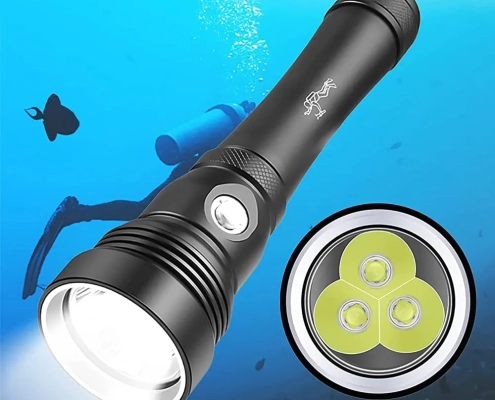
4. Lampes de poche robustes :
Conçues pour résister à des conditions difficiles et supporter des manipulations brutales, les lampes de poche robustes portent bien leur nom. Elles présentent une durabilité supérieure par rapport aux lampes de poche ordinaires, offrant une résilience contre les dommages potentiels causés par des chutes accidentelles. Lorsque vous recherchez une lampe de poche fiable pour un usage intensif, opter pour ce type s’avère être une sage décision. Il bénéficie d'une autonomie impressionnante, garantissant une utilisation prolongée sans remplacements fréquents. Cet attribut rentable en fait un choix souhaitable pour les applications intensives. Cependant, il est important de noter qu’il existe également d’autres alternatives durables.
This versatile flashlight finds common utility during hunting trips or outdoor excursions. An incandescent bulb serves as the light source for a heavy-duty flashlight. While not the most convenient option, it remains an affordable solution for a rugged and reliable illumination.
5. High- Intensity Discharge (HID) Flashlights:
HID flashlights shine very bright. They are different. They use electricity in a gas ball. HID flashlights aren’t common like the ones with regular bulbs. They cost more too. They can be 10 times pricier than normal flashlights. Enthusiasts, however, like them. Even though they are expensive, HID flashlights are handy. They make a big area bright. This is why they are great for outdoor trips or camping.
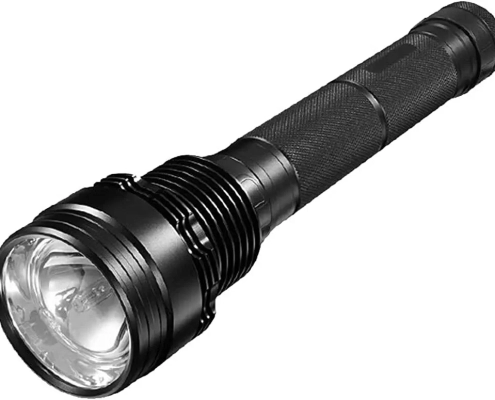
6. Incandescent Flashlights
For years, people have loved incandescent flashlights. These flashlights are cheap. They use D batteries. People use them to see in the dark when fixing bathrooms. Incandescent flashlights don’t mind the weather. They can handle water and don’t rust. They are good for rainy days. But, they break if you drop them. The strong ones that don’t break are pricey. A person can hold this flashlight. It is useful at home. It’s easy to use when fishing or camping. It can light up a big space.
7. Solar Powered Flashlights
Lots of people like to buy things that are good for the earth. This includes flashlights. So, there are solar flashlights for these people. These flashlights are often strong enough for normal use. But these flashlights are usually not as strong as others. Yet, some can be brighter. Still, they can’t beat LED or HID flashlights. But if you charge them well, they can be cheaper than flashlights with normal bulbs. A solar flashlight on a rock Some have a hand crank. This lets you make light when there’s no sun. This is good for when you forget to charge it.

Comment fonctionnent les lampes de poche ?
While a flashlight might seem like a simple gadget, its inner workings involve an elegant dance of physics and engineering. Understanding these core principles can greatly enhance our appreciation for this seemingly simple device.
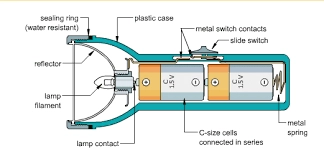
1. Principes de base du fonctionnement de la lampe de poche
At its heart, the operation of a flashlight is an exercise in converting energy. It’s a device that turns electrical energy stored in the battery into visible light, a form we can utilize.
Imagine switching on a flashlight. What happens? When you press the switch, you complete an electric circuit. This circuit includes the battery, a conductive material (usually a metal), the switch, and the light bulb.
Electricity, eager to flow along the path of least resistance, travels from the battery through the conductor and into the bulb. Here, it encounters resistance – the filament or LED chip. This resistance causes the electricity to lose energy, and it compensates for this loss by generating heat and light.
In essence, the flashlight is a controlled environment where we intentionally introduce resistance (in the form of a bulb) into an electrical circuit to produce light.
2. Rôle de la batterie dans l'alimentation d'une lampe de poche
The battery is the heart that pumps life into a flashlight, storing and providing the electrical energy needed. It’s the origin of the electrical flow when you switch the flashlight on.
Different types of batteries offer varying levels of voltage and capacity. The choice of battery not only affects the brightness of the flashlight but also its runtime and performance under different conditions. Therefore, understanding the nature and specifications of different battery types is crucial when choosing the right battery for a flashlight.
3. Types d’ampoules courants dans les lampes de poche : à incandescence, LED et HID
Just as there are different types of flashlights, there are also different types of bulbs that can be found in these devices, each with its own set of advantages and disadvantages.
- Incandescent Bulbs: These are the traditional light bulbs many of us grew up with. They produce light by heating a thin tungsten filament until it glows. While their warm light is comforting, they are inefficient compared to newer technologies and have a relatively short lifespan.
- LED (Light Emitting Diodes): LEDs are the reigning kings of efficiency in the world of lighting. Rather than using heat to produce light, they use a semiconductor material. When electricity passes through this material, it generates light. LEDs use significantly less energy than incandescent bulbs, last longer, and are more durable.
- HID (High-Intensity Discharge): HID lamps work on a principle similar to that of fluorescent lamps. They pass an electric current through a gas, which produces a bright, intense light. HID lamps are incredibly efficient and bright, often used in places where a lot of light is needed, like in large outdoor areas.
In the next sections, we’ll explore the heart of the flashlight, the battery, in more detail, especially the LiFePO4 type. We’ll then guide you on how to choose the best battery for your flashlight, considering various factors like flashlight type, usage scenario, battery life, and environmental conditions.
Plongez dans la technologie des batteries
We use batteries every day in a myriad of devices, yet few of us pause to consider what they are and how they’ve become so integral to our lives. Let’s unpack this hidden world of energy storage.
1. Définir une batterie et sa fonction dans les appareils électroniques
At its most basic, a battery is a device that stores chemical energy and converts it into electrical energy. This simple concept empowers a wide array of our electronic devices, from flashlights to mobile phones, laptops, and electric vehicles.
Batteries consist of one or more cells, each composed of an anode (negative electrode), a cathode (positive electrode), and an electrolyte, which facilitates the movement of ions. When connected to a circuit, a chemical reaction takes place, causing electrons to flow from the anode to the cathode, creating an electric current.
In the context of a flashlight, a battery supplies the electrical energy required for the light bulb to produce light. The brightness of the light and the duration for which the flashlight can stay on are both directly influenced by the battery’s voltage and capacity.
2. Bref historique de la technologie des batteries
The concept of a battery dates back to 1800 when Italian physicist Alessandro Volta invented the voltaic pile, the first true battery. Over time, advancements in technology led to the creation of different types of batteries, each designed to better serve our evolving needs.
From lead-acid batteries used in cars to nickel-cadmium (NiCd) batteries prevalent in portable electronics during the 1980s and 1990s, we have now advanced to lithium-based batteries, a leap driven by their superior energy density and longevity.
3. Introduction aux différents types de piles : alcalines, NiMH, lithium et LiFePO4
Different scenarios require different types of batteries. Here, we’ll briefly cover four major types: Alkaline, NiMH, Lithium, and LiFePO4.
- Alkaline: Alkaline batteries are a common sight in many household devices, from remote controls to children’s toys. They offer a good balance of cost and performance for low-drain devices. However, they’re not ideal for high-drain applications like flashlights due to their comparatively low capacity and discharge rate.
- Nickel-Metal Hydride (NiMH): These rechargeable batteries are a step up from alkaline batteries in terms of capacity and environmental friendliness. They’re often used in digital cameras and other high-drain devices. However, NiMH batteries can suffer from high self-discharge rates, losing their charge over time even when not in use.
- Lithium: Lithium batteries are favored for their high energy density and long shelf life. They perform exceptionally well in high-drain devices and can handle a wide range of temperatures, making them ideal for outdoor use.
- Lithium Iron Phosphate (LiFePO4): A subset of lithium batteries, Piles LiFePO4, are safer, have a longer lifespan, and can provide high levels of power. These features make them highly suitable for flashlights, electric vehicles, and energy storage systems.
In our upcoming section, we will shine a spotlight on LiFePO4 batteries, delving into their unique benefits for flashlights and why they stand out among the other battery types.
Pleins feux sur la batterie LiFePO4
The evolution of batteries has led to an array of options, each tailored to specific applications. Among these, one stands out for its unique properties – the Lithium Iron Phosphate (LiFePO4) battery.
1. Discussion détaillée sur la technologie des batteries LiFePO4
LiFePO4 batteries are a type of lithium-ion battery that utilizes lithium iron phosphate (LFP) as the cathode material. They emerged in the late 1990s, becoming a topic of research interest due to their unique properties. But what makes LiFePO4 batteries stand out?
Firstly, LiFePO4 batteries have exceptional thermal and chemical stability. This provides an increased safety margin compared to other lithium-ion batteries, which are prone to overheating and, in rare cases, combustion.
Secondly, they are resilient and long-lasting. Piles LiFePO4 have a high cycle life, meaning they can be charged and discharged many times over without significant capacity loss. This is a stark contrast to other battery types, which can degrade more rapidly over time.
Also, LiFePO4 batteries have a lower self-discharge rate than many other rechargeable batteries. This means that a flashlight with a LiFePO4 battery can sit idle for much longer before its charge significantly depletes.
Finally, they operate well in a broad range of temperatures, making them suitable for use in various climates, from hot to cold.
2. Avantages des batteries LiFePO4 dans les applications de lampes de poche
Now, let’s transition to the practicality of these batteries – why are they particularly well-suited to flashlights?
For starters, flashlights often require high energy output, particularly in high-drain situations, like using a bright setting for extended periods. LiFePO4 batteries can meet this demand due to their high discharge rates.
Next, remember that a flashlight is not just an object, but a tool for safety, exploration, or work. Its reliability is crucial. With LiFePO4 batteries’ impressive cycle life and stability, they are less likely to fail or lose capacity, even after frequent use.
Also, flashlights are often exposed to various environmental conditions – you might be camping in the cold or hiking under the hot sun. The broad operating temperature range of LiFePO4 batteries ensures that your flashlight will work optimally, irrespective of the weather.
Last but not least, size matters. LiFePO4 batteries come in various sizes, including AA and AAA, making them compatible with a wide range of flashlights.
In summary, Piles LiFePO4 offer a compelling blend of safety, longevity, performance, and versatility, making them a top-tier choice for flashlights. As flashlight users, we need to ensure our tool’s reliability, and choosing the right battery is a significant step towards that. In the following sections, we will provide guidance on how to make that choice.
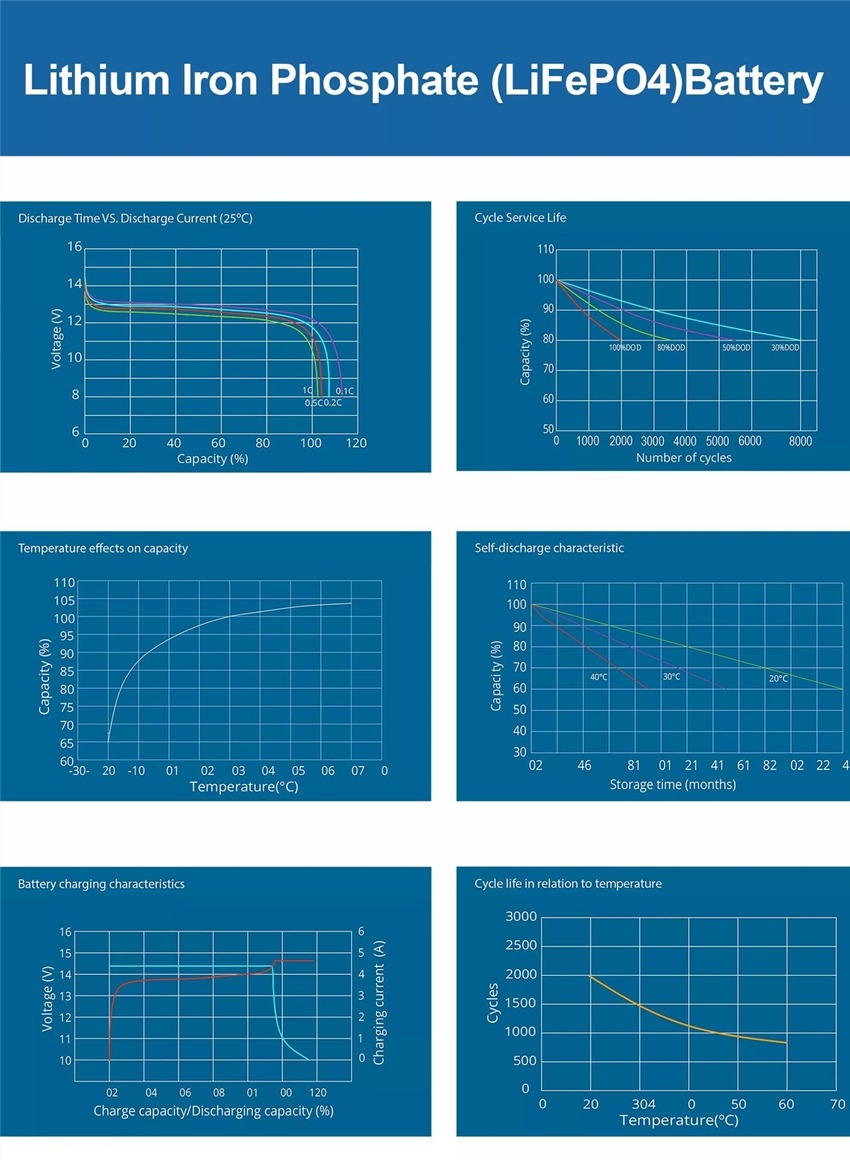
Comment choisir la bonne batterie pour votre lampe de poche
When it comes to powering your flashlight, not all batteries are created equal. Let’s delve into the key considerations to keep in mind when choosing the perfect fit.
1. Prise en compte du type de lampe de poche et du cas d'utilisation
Your flashlight’s design and intended use will significantly influence your battery choice. For instance, handheld flashlights commonly used for home emergencies can work effectively with a wide range of batteries. However, a high-intensity tactical flashlight, used by law enforcement or outdoor adventurers, may require batteries capable of delivering high power output, like LiFePO4.
2. Évaluation des options de batterie : avantages et inconvénients de chacune
Alkaline batteries are widely available and inexpensive but lack the rechargeability and high performance of other types. NiMH batteries are rechargeable and eco-friendly but have lower energy density. Lithium batteries offer excellent performance in cold weather and long shelf life but are not rechargeable.
On the other hand, LiFePO4 batteries provide high energy output, safety, and a long cycle life. Their only drawback may be the initial cost, which is typically higher than other types. However, this is offset by their longevity, making them cost-effective in the long run.
3. L'importance de la compatibilité et de la taille de la batterie
You must consider the battery size that your flashlight can accommodate. Most flashlights are designed for standard sizes like AA or AAA, but some high-performance models may require specialized sizes. Also, ensure that the battery’s voltage matches your flashlight’s specifications to avoid potential damage.
4. Évaluation de la durée de vie et de la recharge de la batterie
Battery life refers to how long the battery can power your flashlight before needing a recharge or replacement. Depending on your flashlight use, you might prioritize battery life or rechargeability. Regular flashlight users might opt for rechargeable batteries like NiMH or LiFePO4 for long-term savings and environmental benefits.
5. Prise en compte des conditions environnementales
Your operating environment can also influence your battery choice. If you’re using a flashlight in a cold climate, lithium or LiFePO4 batteries are your best bet due to their exceptional performance at low temperatures.
In conclusion, choosing the right battery involves evaluating several factors, including your flashlight’s design, usage, and the operating conditions. Each battery type has its pros and cons, but given their numerous advantages, LiFePO4 batteries stand as a highly reliable choice for various flashlight applications. In the next section, we’ll go over some practical tips for maintaining your flashlight batteries to ensure optimal performance and longevity.
Conseils pour entretenir les piles des lampes de poche
Once you’ve chosen the right batteries for your flashlight, it’s crucial to care for them properly. This not only ensures reliable performance but also extends their lifespan. Let’s explore some key tips for maintaining your flashlight batteries.
1. Stockage correct des piles
Storing your batteries properly can significantly prolong their life. Always store them in a cool, dry place away from direct sunlight and extreme temperatures. High heat can cause the battery components to degrade or even explode, while extreme cold can diminish capacity.
For Piles LiFePO4, it’s recommended to store them at a partial state of charge, ideally between 30% to 50%. This reduces stress on the battery and prolongs its life. Also, remove batteries from your flashlight if you’re not planning to use it for a while to prevent leakage or corrosion.
2. Bonnes pratiques de recharge
Charging your batteries correctly is just as important. For rechargeable batteries like NiMH or LiFePO4, always use the charger recommended by the manufacturer. These chargers are designed to optimize battery life and safety. Overcharging or undercharging can harm the battery’s health and reduce its lifespan.
LiFePO4 batteries, in particular, benefit from a process known as ‘balancing’ during charging. This process ensures that all cells within the battery are charged to an equal level, promoting optimal performance and longevity.
3. Signes indiquant qu'une batterie doit être remplacée
Despite your best efforts, all batteries eventually need replacement. Knowing the signs can help you avoid a sudden flashlight failure. Diminished light output, reduced run time, or physical damage to the battery (like bulging or leakage) are clear indications it’s time for a new one.
For LiFePO4 batteries, many users note that a slight drop in performance often precedes the end of the battery’s life. Keeping an eye on these changes can help ensure you’re never left in the dark.
In conclusion, proper battery maintenance doesn’t need to be complex or time-consuming. Simple practices like correct storage, proper charging, and timely replacement can drastically extend your battery’s life and ensure your flashlight is always ready when you need it. Remember, the better you care for your batteries, the better they’ll serve you in return. In the final section, we’ll summarize the key points from this comprehensive guide and offer some parting thoughts.
Conclusion
As we reach the end of our comprehensive guide to flashlight batteries, it’s time to summarize the key takeaways.
1. Recap of the Importance of Choosing the Right Flashlight Batteries
Choosing the right battery for your flashlight is an essential step not to be overlooked. It impacts not just the brightness and runtime of your flashlight, but also its reliability, portability, and overall performance.
We explored the different types of flashlights and batteries, and how each battery type has its strengths and drawbacks. Understanding the specific requirements of your flashlight and your use case is critical. Battery size, life, rechargeability, and how well it performs under varying environmental conditions should all play a role in your decision.
2. Encouragement à considérer les batteries LiFePO4 pour leurs nombreux avantages
Throughout this article, we have highlighted the impressive features of Piles LiFePO4, and it’s no coincidence. Their exceptional durability, safety, and high energy density make them an outstanding choice, particularly for high-performance devices like flashlights.
LiFePO4 batteries offer a long lifespan, rapid charging, and excellent performance, even under harsh conditions. Their environmentally friendly nature is an added bonus. While they might be a slightly more expensive choice, their longevity and consistent performance can make them more cost-effective in the long run.
In conclusion, the world of flashlight batteries may seem complex, but with a little knowledge and understanding, you can make an informed decision that lights your path for years to come. Don’t underestimate the power of choosing the right battery – it’s the life force of your flashlight. Remember, when the lights go out, a well-chosen, well-maintained flashlight battery can make all the difference.


